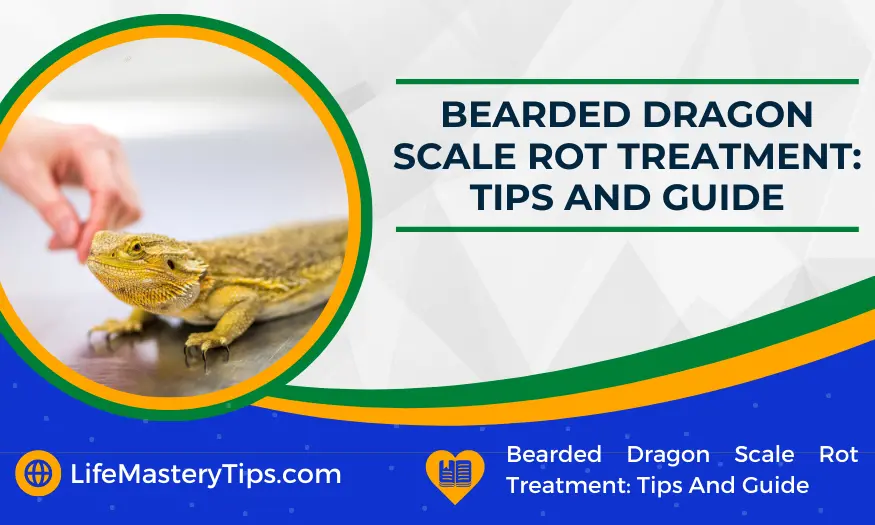When Do Cats Stop Growing – All cats stop growing at some point, but when exactly that happens varies from breed to breed. Some cats reach their full size when they are just six months old, while others continue to grow until they are two years old. Knowing when your cat will stop growing can help you give them the best care possible. Keep reading to learn everything you need to know about when cats stop growing.
Another Interesting Read: Cute Big Cats – Caring And Training Tips
When Do Cats Stop Growing
The answer to when cats stop growing depends on the type of cat. Domestic short-haired and long-haired cats typically reach their full adult size by around one year of age. However, they may continue to fill out and add weight until they are two years old or even older.
Siamese, Ragdoll, and other Oriental breeds may take a bit longer to reach their full adult size and may not be fully mature until they are two or three years old. Giant breeds like the Maine Coon can take even longer to reach their full adult size and may not be fully mature until they are four or five years old.
So, when do cats stop growing? It depends on the breed, but most cats reach their full adult size by around two years of age. However, they may continue to fill out and add weight until they are three or even four years old. Giant breeds like Maine Coon can take even longer to reach their full adult size and may not be fully mature until they are five years old or even older.
While a cat’s skeletal system is mostly done growing by around one year of age, their muscles, tendons, and ligaments continue to grow and develop until they are two or three years old. This is why you may see your kitten “growing into their legs” as they get older and become more coordinated.
Cats Keep Growing Until They Reach Two Years Old
Cats keep growing until they reach two years old. Most cats will have reached their full adult size by the time they are two years old. However, some larger breeds may continue to grow until they are three or four years old. While a cat’s body size stops growing at two years old, its bones continue to grow and mature until they are around three or four years old. This is why it’s important not to declaw a young cat – their claws are still growing and maturing, and declawing can cause long-term problems.
If you have a young cat, make sure to provide plenty of scratching posts and toys to keep their claws healthy and sharp. You should also consider getting them spayed or neutered when they reach six months old, as this can help to reduce unwanted behaviours such as spraying and fighting.
Male Cats Tend To Grow Bigger Than Female Cats
While both male and female cats can vary in size, males tend to be larger than females on average. Male cats typically reach their full adult size when they’re around one to two years old, while females usually reach their full adult size when they’re around six to seven months old.
However, keep in mind that individual cats can grow at different rates, so your cat’s actual growth pattern may differ from these averages. Ultimately, when do cats stop growing? Male cats usually stop growing when they’re around two years old, while female cats typically stop growing when they’re around seven months old.
However, individual cats can reach their full adult size at different ages, so your cat’s exact growth pattern may vary. If you’re curious about your cat’s growth, talk to your veterinarian for more information.
Cats are unique creatures and come in all shapes and sizes. While some cats are small and delicate, others are large and muscular. And while male cats tend to be larger than females on average, there can be a lot of variation between individual cats.
Some Cat Breeds Grow More Than Others
All cat breeds grow at different rates, and some stop growing sooner than others. While there is no definitive answer to when cats stop growing, there are a few things to consider when trying to determine when your cat will reach its full size.
#1 – Consider the Breed
The first thing to think about when trying to figure out when your cat will stop growing is the breed. Some breeds of cats grow faster and reach their full size sooner than others. For example, Siamese cats typically reach their full size between 12 and 18 months old. Other breeds, like Maine Coons, can take up to three years to reach their full size.
#2 – Think About the Gender
Another thing to consider when trying to determine when your cat will stop growing is gender. Male cats tend to be larger than females, so they may take longer to reach their full size. However, there are always exceptions to this rule, so it’s best to consult with your veterinarian if you’re unsure.
#3 – Spaying and Neutering
If you have your cat spayed or neutered, this can also affect their growth. Cats who are spayed or neutered typically reach their full size sooner than those who are not. This is because the hormones released during puberty can cause cats to grow larger.

#4 – Consult With Your Veterinarian
If you’re still unsure about when your cat will reach its full size, the best thing to do is to consult with your veterinarian. They will be able to give you a more accurate estimate based on the breed, gender, and health of your cat.
#5 – Enjoy Your Cat at Any Size!
No matter when your cat stops growing, remember to enjoy them in any size! They’ll always be your furry friend, no matter how big or small they are.
Obesity Can Cause Cats To Stop Growing Prematurely
Cats are prone to obesity, and this can cause several health problems. One of the most serious is that it can cause them to stop growing prematurely. Cats typically reach their full size by around 18 months of age. However, if they are obese, they may reach this point much sooner.
This can lead to several problems, including joint and bone problems. It is therefore important to keep your cat at a healthy weight. You can do this by feeding them a balanced diet and making sure they get plenty of exercises.
Proper Nutrition And Care Are Essential For Healthy Growth In Cats
Cats are creatures of habit and when it comes to their diet, they can be quite particular. To ensure that your cat is getting the nutrients they need for healthy growth, it’s important to feed them a well-balanced diet and provide them with plenty of fresh water.
Cats are generally considered to be fully grown by the time they reach one year of age. However, some large breeds may continue to grow until they are two or three years old. Regardless of when they reach their full size, it’s important to provide your cat with proper nutrition and care throughout their life to ensure their continued health and well-being.
Kittens Need A Different Balance Of Nutrients Than Adult Cats
When it comes to feeding your cat, there are a variety of commercially available cat foods that can provide them with the nutrients they need. However, it’s important to read the labels carefully to make sure that you’re choosing a food that is appropriate for your cat’s age and stage of life. For example, kittens need a different balance of nutrients than adult cats, so it’s important to choose a food that is specifically designed for their needs.
In addition to providing your cat with a balanced diet, it’s also important to make sure they have access to clean water at all times. Cats are notorious for being picky drinkers, so you may need to experiment with different types of water bowls or even flavoured water to get them to drink enough.
Make Sure Your Cat Gets Plenty Of Exercise To Encourage Proper Growth
One of the best ways to ensure your cat stays healthy and continues to grow properly is to make sure they get plenty of exercise. Unfortunately, many cats don’t get enough physical activity, which can lead to several health problems down the road.
How much exercise does your cat need
How much exercise your cat needs will depend on their age, breed, and overall health. Kittens, for example, are full of energy and need to burn off that excess energy through play. Older cats, on the other hand, may not be as active but still need some form of exercise to stay healthy.
The best way to know how much exercise your cat needs is to talk to your veterinarian. They can help you create an exercise plan that’s tailored to your cat’s specific needs. So, if you want your cat to stay healthy and keep growing properly, make sure they get plenty of exercise. It’s one of the best things you can do for them.
What Kind Of Exercise Is Best For Your Cat
As your cat grows, their exercise needs will change. Kittens need more playtime than adult cats, and senior cats may need more low-impact activity. Knowing what kind of exercise is best for your cat at every stage of life can help them stay healthy and happy. Kittens are full of energy and love to play. They should have several short play sessions each day, with plenty of toys to keep them entertained. scratching posts can also help kittens to stay active and avoid destructive behaviours.
As cats get older, they tend to become more sedentary. This doesn’t mean they don’t need exercise, however. Senior cats should have at least one short play session each day, along with plenty of opportunities to explore their environment. Toys that encourage mental stimulation, such as puzzle feeders, can also help keep senior cats active and engaged.
No matter what age your cat is, it’s important to provide them with a variety of toys and activities to keep them healthy and happy. If you’re not sure what kind of exercise is best for your cat, talk to your veterinarian for guidance.
Tips For Exercising Your Cat
Cats are natural predators and love to hunt. When they don’t have an outlet for this instinct, they can become bored and even destructive. Exercise is important for cats of all ages, but it’s especially crucial for kittens who are still growing.
Here are some tips for exercising your cat:
#1 – Get a scratching post.
Scratching is a natural feline behaviour, and it’s important to provide your cat with an outlet for this urge. A scratching post will also help keep your furniture intact!
#2 – Play with your cat every day.
It’s important to engage in active play with your cat every day. This can be as simple as using a toy on a string to get them running and leaping.
#3 – Get a cat tree.
A cat tree is an excellent way to give your cat a place to climb and explore. It’s also a great way to provide them with some mental stimulation.
#4 – Set up an indoor obstacle course.
Use furniture and other objects to create an indoor obstacle course for your cat. This is a great way to get them moving and use their natural hunting instincts.
#5 – Take your cat outside.
If you have a safe outdoor space, take your cat outside for some fresh air and exercise. Just be sure to keep an eye on them and bring them back inside when they’re done.
Providing your cat with adequate exercise is important for their physical and mental health. With a little creativity, you can easily find ways to keep your cat active and engaged.
The Benefits Of Exercising Your Cat
Cats are often known as lazy creatures, but that doesn’t mean they don’t need to exercise. Just like any other animal, cats need to move around and stay active to stay healthy. Exercise is important for cats of all ages, sizes, and breeds.
Here are some of the benefits of exercising your cat:
#1 – It Can Help Them Lose Weight
If your cat is carrying around a few extra pounds, then exercise can help them shed the excess weight. Just like in humans, being overweight can lead to health problems in cats such as diabetes and joint problems.
Exercise will help your cat burn off calories and slim down to a healthy weight. If you’re not sure how much your cat should weigh, talk to your veterinarian. They can help you come up with a weight loss plan that’s safe and effective for your cat.
#2 – It Can Keep Their Muscles Strong
As cats age, they can start to lose muscle mass. This can lead to weak muscles and joints, which can make it difficult for them to move around. Exercise can help keep your cat’s muscles strong and healthy, even as they get older.
There are a variety of ways you can exercise your cat. You can buy toys that encourage them to move around, such as string toys or balls. You can also create an indoor obstacle course for them to play in. Just be sure to supervise your cat when they’re playing, as they could knock over breakable items.
#3 – It Can Help Their Digestion
Exercise can also help keep your cat’s digestive system healthy. When cats are inactive, their digestive system can start to slow down. This can lead to constipation and other digestive problems.
Exercise can help stimulate your cat’s digestive system and keep things moving along smoothly. There are a variety of toys you can buy that will help get your cat’s digestive system going, such as food dispensing toys. So, as you can see, there are many benefits to exercising your cat. It’s important to keep your cat active and moving to help them stay healthy and happy.
How To Create A Routine For Your Cat’s Exercise
As a responsible pet owner, you want to make sure your cat is getting enough exercise. After all, a healthy cat is a happy cat! But when do cats stop growing?
Luckily, there are plenty of ways to incorporate exercise into your cat’s daily routine. Here are a few tips on how to create a routine for your cat’s exercise:
#1. Invest in some quality cat toys.
When it comes to exercise, not all cat toys are created equal. Cheaper toys may be more likely to break and can even pose a choking hazard. Instead, invest in some quality cat toys that will withstand plenty of wear and tear.
#2. Get your cat moving with a little help from you.
Cats love to chase and pounce, so get your cat’s hunting instincts going by playing games like “catch the light” or “hide and seek.” Not only will your cat get a workout, but you’ll also get to bond with your feline friend.
#3. Create an obstacle course.
Set up a simple obstacle course in your home using everyday items like boxes, blankets, and pillows. Your cat will love exploring the course and getting some exercise in the process.
#4. Take your cat for a walk.
Yes, you read that correctly! You can take your cat for a walk using a harness and leash. This is a great way to get your cat some fresh air and exercise at the same time.
Following these tips will help you create a routine for your cat’s exercise that is both fun and beneficial for their health. So get started today and see the difference it makes in your cat’s life!
Conclusion | When Do Cats Stop Growing – Everything You Need To Know
As a responsible pet owner, it’s important to make sure your cat is getting enough exercise. Not only does exercise help keep cats healthy and happy, but it can also help with weight loss, digestion, and muscle strength as they age. There are many ways to incorporate exercise into your cat’s daily routine, so there’s no excuse not to get started today!
We hope this article has helped answer the question, “when do cats stop growing?” If you have any further questions or concerns, be sure to speak with your veterinarian. They will be able to give you more specific advice on how to care for your cute cat throughout their life. Thanks for reading!
You Might Also Like:




